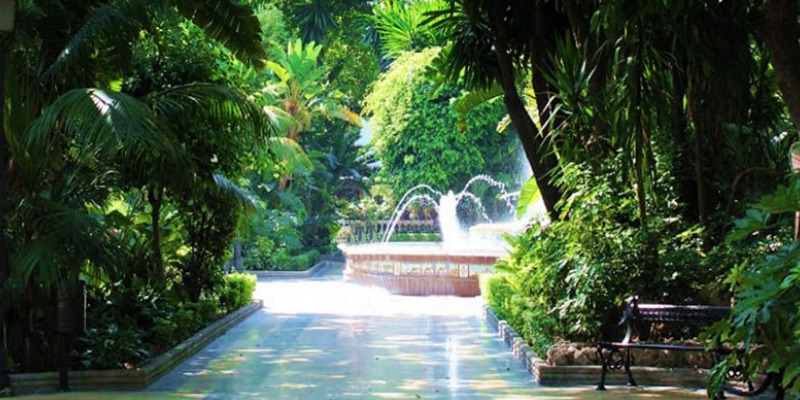A network of green itineraries in the middle of the urban spaces in Marbella, San Pedro and las Chapas will lead you to surroundings that are not far-removed and the richness of the existing biodiversity in the city is tantalizing and many times we are not aware of this treasure. Therefore, we have a request to make to the citizens; please open your mind and realize what is around you, the urban environment.
Invitation to urban walkways of biodiversity in Marbella
A walk through these pathways will unravel amazing stores, more knowledge about urban diversity, our own public spaces and its history. We encourage the practice of healthy habits, since this area was converted into a didactic area for students.
It is part of Marbella Strategic Plan – San Pedro 2022, as a synergetic project fostered by the general public and the Sustainability Delegation of Marbella Town Hall to attain a sustainable city model, aware of the unique environment and the exceptional nature that surrounds us. A green city that focuses on the value of natural resources, the landscape and cultural heritage. These ambles through urban biodiversity are comprised in a global action to enhance the wonders of existing nature in urban areas and the opportunity that is presented to a wide variety of living beings that find their vital sustenance among us.
The Urban Pathway in the center of Marbella will provide to the citizen or the visitor a circular route right near to us, with approximately 5 kilometers in length. One can also find informative posters, in Spanish and English, in more than twenty areas in the city and they even include a situation maps and the possibility to listen to them by means of audio-guides in several languages. You can start at any point in the tour although we recommend Paseo de la Alameda as a starting point and the walk can continue in the direction of the sea front.
Some of the spots worth visiting for tourist as well as Marbella residence you can read about here below, nervelessness there are over 30 different urban and nature paths to chose from in the area. You can find them all on the town-hall webpage of Marbella. Invitation to urban walkways of biodiversity in Marbella.
The Alameda
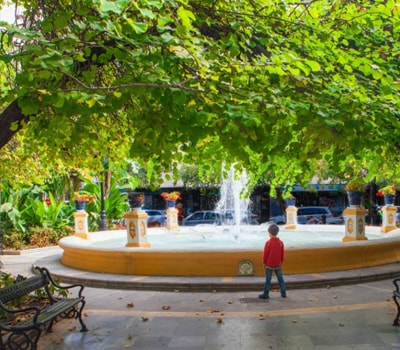 Marbella’s Alameda represents a vital element in its history, a high-identity place, one of reference because it was the recreation and meeting spot of the City’s inhabitants.
Marbella’s Alameda represents a vital element in its history, a high-identity place, one of reference because it was the recreation and meeting spot of the City’s inhabitants.
The first existing data on the opening of the park date back to the 18th century. In a document dated 1761 the existence is noted of a promenade where planted black poplars were watered through small moats providing abundant water, complemented a year later with a fountain at one of its extremes.
A century later, in 1868, this Marbella park experienced a major and timely transformation thanks to the sale of some City plots to the English mining company “Marbella Iron Ore”.
Nowadays its oldest feature is the fountain located in the eastern section of the park, built in 1762, known by the people of Marbella as “La Pila”. Within the area’s lush greenery centuries-old Araucarias (monkey-puzzle trees) and Buttonwood trees are found, both species planted last century, between 1910 and 1920.
Guadalpin Stream
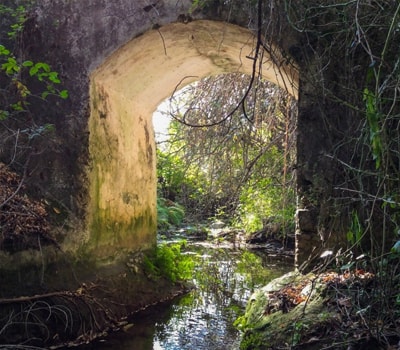 Guadalpín Stream was born in the heart of Sierra Blanca. Even though the water flow is short, it is filled with ethnographic, historical, landscape and natural values. Historically, the river course always rendered a testimony to the identity of Marbella’s inhabitants. Throughout the river banks line, one can still bear witness to the architectural elements of the past such as remains of the Ermita de los Monjes, which dates from the XVI century perceived clearly on the mountain and the banks of this stream in addition to a flour mill built in the same century.
Guadalpín Stream was born in the heart of Sierra Blanca. Even though the water flow is short, it is filled with ethnographic, historical, landscape and natural values. Historically, the river course always rendered a testimony to the identity of Marbella’s inhabitants. Throughout the river banks line, one can still bear witness to the architectural elements of the past such as remains of the Ermita de los Monjes, which dates from the XVI century perceived clearly on the mountain and the banks of this stream in addition to a flour mill built in the same century.
Guadalpin is filled with landscapes that are steep, seductive, solitary and exuberant. This modest stream runs through places in which nature can be perceived with all its splendorous beauty. European species of great ornithological interest such as the Bonelli’s Eagle, Aquila Fasciata, and the Black Wheatear, Oenanthe Leucura, can also be seen in this hydrographic basin. The presence of the Leatherleaf Fern, a rare specie in Europe and a type of willow belonging to the Salix Pedicellata specie with a very restricted distribution in the entire world.
Pecho de las Cuevas
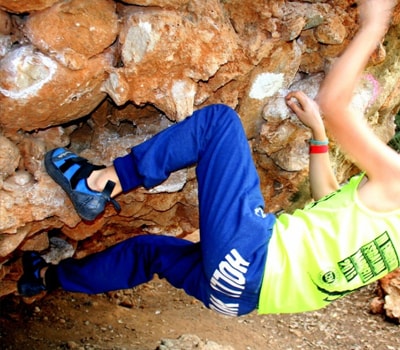 This natural space, in the middle of the city and adjacent to the sports center Paco Cantos or how it was called before, Llano de la Polvora, is nothing less than a geological treasure. Currently, this space is used for the practice of rock climbing.
This natural space, in the middle of the city and adjacent to the sports center Paco Cantos or how it was called before, Llano de la Polvora, is nothing less than a geological treasure. Currently, this space is used for the practice of rock climbing.
This area is as old as the middle Pliocene, with emerging fluvial-marine alluvium, possibly as a result of tectonicInvitation to urban walkways of biodiversity in Marbella movements. The existing caves gives us an idea of the coast line at that time, with the cemented conglomerated cliffs. The waves erode the cliff forming the caves as we know them today.
One can observe small sediments paleo-beaches with sub-Saharan sands that were formed with the gradual retreat of the sea. For sure, this formation is very related to the inception of the Guadalpín River.
Park in the Dam
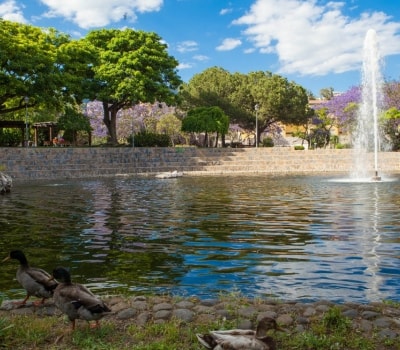 Under this beautiful urban park, we can find the stream of the Dam, also called in the past as La Barbacana or Las Tenerías. It divided the historic center of the new district conjoined by the Malaga bridge (old entry gate to the walled city). In this exuberant green space, there are species of trees from several parts of the world which belongs to tropical and temperate climates. Native species such as the cork oak, Quercus suber, and the Madrone, Arbutus unedo, can also be found there.
Under this beautiful urban park, we can find the stream of the Dam, also called in the past as La Barbacana or Las Tenerías. It divided the historic center of the new district conjoined by the Malaga bridge (old entry gate to the walled city). In this exuberant green space, there are species of trees from several parts of the world which belongs to tropical and temperate climates. Native species such as the cork oak, Quercus suber, and the Madrone, Arbutus unedo, can also be found there.
Inside the park, you can also find the Bonsai Museum, where it is possible to admire a magnificent collection of these tiny trees with international recognition. Another element that stands out in this park are the ponds, there you can see plants that are entirely adapted to the aquatic environment surrounded by species of trees connected to these areas in which there is abundant water.





